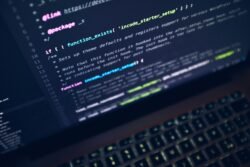In “Applying AI to Scientific Problems: Pacific Northwest National Laboratory’s Approach,” Pacific Northwest National Laboratory (PNNL) is revolutionizing the field of scientific research by harnessing the power of artificial intelligence (AI) across various domains. From national security and the electric grid to Earth systems, PNNL is at the forefront of using AI to tackle complex challenges. Through their DeepGrid platform, PNNL is applying deep reinforcement learning to help power system operators develop robust emergency control protocols for the electric grid. Additionally, PNNL is pioneering physics-informed machine learning techniques and generative models for molecular structures. By taking a holistic approach to AI research, ensuring safety, security, interpretability, explainability, and general robustness of AI-enabled systems, PNNL is paving the way for groundbreaking advancements in content intelligence, data engineering, and interdisciplinary collaborations. With their innovative Sharkzor AI model, PNNL is proving that AI can effectively classify data using just a handful of training examples, revolutionizing fields such as nuclear forensics analysis. With their unwavering commitment to scientific discovery, PNNL is pushing the boundaries of what AI can achieve in the realm of scientific problems.
AI Applications in Various Domains
Artificial Intelligence (AI) has become a powerful tool in solving scientific problems in various domains. The Pacific Northwest National Laboratory (PNNL) is at the forefront of applying AI to areas such as national security, the electric grid, and Earth systems. Through their innovative research and development, PNNL is pushing the boundaries of what AI can achieve in these fields.

National Security
National security is a critical concern for governments around the world, and AI has proven to be immensely valuable in this domain. PNNL is actively working on developing AI models that can address national security challenges. By analyzing vast amounts of data, these models can identify potential threats and provide actionable insights to security agencies.
One of the key focuses of PNNL’s research is in understanding and predicting social behaviors. Through AI, PNNL aims to gain valuable insights into the dynamics of social systems and how they can impact national security. By analyzing social media data, communication networks, and other relevant information, AI models can identify patterns and trends that can help authorities respond effectively to potential threats.
Electric Grid
The electric grid is a complex and dynamic system that requires constant monitoring and control. PNNL’s DeepGrid platform utilizes deep reinforcement learning to assist power system operators in creating more robust emergency control protocols. By leveraging AI algorithms, DeepGrid can analyze real-time data and make informed decisions to ensure the stability and reliability of the electric grid, even during emergencies.
DeepGrid provides power system operators with advanced tools and techniques to optimize grid operations. By combining AI capabilities with the expertise of operators, DeepGrid enables proactive decision-making that can prevent disruptions and minimize downtime. This not only improves the overall efficiency of the electric grid but also enhances its resilience to external factors such as extreme weather events or cyberattacks.
Earth Systems
Understanding and predicting Earth systems is crucial for mitigating the impact of climate change and natural disasters. PNNL is harnessing the power of AI to develop models that can analyze vast amounts of environmental data and provide valuable insights. These AI models can help researchers and policymakers make informed decisions to protect our planet and its ecosystems.
Through the integration of data engineering and AI, PNNL is able to provide optimal solutions in critical mission spaces related to Earth systems. By combining high-resolution satellite imagery, climate data, and geospatial information, AI models can identify patterns and trends that may not be immediately apparent to human analysts. This allows for more accurate predictions and better-informed decision-making regarding climate change, deforestation, and other environmental concerns.
DeepGrid: Reinforcement Learning for the Electric Grid
Overview of DeepGrid
DeepGrid is an open-source platform developed by PNNL that utilizes deep reinforcement learning techniques for the electric grid. This platform enables power system operators to create more robust emergency control protocols by leveraging advanced AI algorithms.
DeepGrid takes advantage of the massive amount of data generated by the electric grid to train AI models. By analyzing historical data and simulating various emergency scenarios, DeepGrid can learn to make optimal decisions in real-time. This capability ensures the stability and reliability of the electric grid, even in the face of unexpected events or disruptions.
Creating Robust Emergency Control Protocols
One of the key challenges in managing the electric grid is the development of robust emergency control protocols. These protocols define the actions that need to be taken during emergencies to maintain grid stability and prevent blackouts. DeepGrid assists power system operators in creating these protocols by providing advanced AI capabilities.
Through reinforcement learning, DeepGrid learns from past experiences and simulations to identify the most effective actions to take during emergencies. By analyzing data from sensors, power generators, and other grid components, DeepGrid can make informed decisions that optimize grid operations and minimize the impact of emergency events.
The ability of DeepGrid to continuously learn and adapt makes it a valuable tool for power system operators. By incorporating real-time data and feedback into its decision-making process, DeepGrid can continually improve its emergency control protocols and ensure the stability and resilience of the electric grid.

Physics-Informed Machine Learning for Molecular Structures
Introduction to Physics-Informed Machine Learning
Physics-Informed Machine Learning is an emerging field that combines the principles of physics with the power of AI. PNNL is at the forefront of developing techniques and models that can integrate physics knowledge into machine learning algorithms. This approach allows for more accurate predictions and a better understanding of complex systems.
In the context of molecular structures, physics-informed machine learning can revolutionize the field of drug discovery and material science. By combining physical laws and mathematical models with AI algorithms, PNNL researchers can develop models that can predict the behavior and properties of molecules with unprecedented accuracy.
Generative Models for Molecular Structures
Generative models are a class of AI algorithms that can create new data based on patterns and structures learned from existing data. PNNL is exploring the use of generative models for molecular structures to accelerate the discovery of new drugs and materials.
By training AI models on large datasets of molecular structures, PNNL can create generative models that can produce new molecules with desired properties. This has the potential to significantly speed up the process of drug discovery and material design, as AI models can generate a vast number of candidates for further exploration.
The combination of physics-informed machine learning and generative models opens up exciting possibilities in the field of molecular structures. By leveraging AI algorithms, researchers can explore uncharted territories in drug discovery and material science and potentially unlock breakthroughs that could have a profound impact on human health and technological advancements.
Holistic Approach to AI Research
PNNL takes a holistic approach to AI research, focusing not only on developing powerful AI algorithms but also on addressing critical aspects such as safety, security, interpretability, explainability, and general robustness of AI-enabled systems. This comprehensive approach ensures that AI technologies are not just effective but also ethical, transparent, and trustworthy.
Assuring Safety
Safety is a paramount concern when deploying AI technologies in real-world applications. PNNL researchers are actively working on developing methodologies to ensure the safety of AI-enabled systems. This includes techniques to detect and mitigate biases in AI algorithms, robust testing and validation procedures, and the establishment of ethical guidelines for AI development and deployment.
By investing in safety research, PNNL aims to build AI systems that can be trusted to make accurate and responsible decisions, even in critical domains such as national security and public safety. This not only benefits society as a whole but also instills confidence in the potential of AI technologies.
Assuring Security
The increasing reliance on AI technologies also brings about security concerns. PNNL recognizes the importance of addressing these concerns and is actively researching ways to enhance the security of AI-enabled systems. This includes developing robust cybersecurity measures, ensuring the privacy of data used by AI algorithms, and developing techniques to detect and prevent adversarial attacks on AI models.
By integrating security measures into the design and development of AI systems, PNNL aims to protect against potential vulnerabilities and ensure the integrity and confidentiality of sensitive information. This is crucial, especially in domains such as national security, where any compromise in AI systems can have serious implications.
Interpretability and Explainability
AI algorithms are often considered black boxes, making it difficult to understand how they arrive at their decisions. PNNL recognizes the importance of interpretability and explainability in AI systems and is actively researching ways to make AI algorithms more transparent and understandable.
By developing techniques that can explain the reasoning behind AI decisions, PNNL aims to build trust and facilitate human-AI collaboration. This is especially critical in domains like healthcare, where AI algorithms are used to make life-saving decisions. By providing explanations, AI algorithms can help medical professionals understand and trust the decisions made by AI systems, leading to improved patient outcomes.
General Robustness of AI-Enabled Systems
AI systems need to be robust and resilient to ensure their reliability in real-world applications. PNNL focuses on developing techniques and methodologies to enhance the general robustness of AI-enabled systems. This includes techniques to handle uncertainty, adapt to changing environments, and detect and mitigate biases and errors.
By investing in research on the general robustness of AI-enabled systems, PNNL aims to ensure that AI algorithms perform reliably and accurately, even in challenging and dynamic scenarios. This enhances the trustworthiness of AI technologies and enables their widespread adoption in various domains.

Content Intelligence: Explaining and Predicting Social Systems
AI Models for National Security Challenges
PNNL’s research in content intelligence focuses on developing AI models that can explain and predict social systems and behaviors related to national security challenges. By analyzing vast amounts of data from social media, communication networks, and other sources, PNNL aims to gain valuable insights into the dynamics of social systems and their impact on national security.
One of the key challenges in national security is understanding the motivations and behaviors of various actors in the social landscape. AI models developed by PNNL can analyze patterns of communication, detect anomalies, and predict potential threats. This enables authorities to proactively respond to emerging security challenges and minimize potential risks.
Understanding and Predicting Social Behaviors
Content intelligence is not limited to national security but also extends to a wide range of social behaviors. PNNL’s AI models can analyze social media data to understand trends, sentiments, and public opinions. This information can be used to inform policy decisions, improve crisis response, and better understand the impact of social events on society.
By combining AI capabilities with domain expertise, PNNL aims to provide decision-makers with valuable insights into social behaviors. This can help shape policies, allocate resources effectively, and promote understanding and collaboration among diverse communities.
Integration of Data Engineering and AI
Data engineering plays a crucial role in enabling AI applications to operate on large and complex datasets. PNNL recognizes the importance of data engineering and has integrated it with AI to provide optimal solutions in critical mission spaces.
By leveraging advanced data engineering techniques, PNNL can preprocess and cleanse data, ensure data quality and integrity, and optimize data storage and retrieval. This enables AI algorithms to operate on clean and reliable data, leading to more accurate predictions and insights.
The integration of data engineering and AI also unlocks the potential for real-time analytics and decision-making. By combining streaming data with AI algorithms, PNNL can provide timely insights that can drive proactive actions and decision-making in critical domains such as emergency response and cybersecurity.
Expanding AI Capabilities Beyond Images
AI has traditionally been associated with image recognition and computer vision. However, PNNL researchers have expanded the capabilities of AI to include text, audio, and video data. This allows for a broader range of applications and enables machine learning models to be built with fewer training examples.
Incorporating Text, Audio, and Video Data
Text, audio, and video data are rich sources of information that can provide valuable insights. PNNL researchers have developed AI models that can analyze and understand natural language, speech patterns, and visual cues. This capability opens up possibilities for applications such as sentiment analysis, speech recognition, and video content analysis.
By incorporating text, audio, and video data into AI models, PNNL expands the range of problems that can be addressed using AI. From analyzing social media posts to understanding spoken language and identifying objects in videos, AI algorithms can extract valuable information and enable decision-making based on multimodal data.
Building Models with Fewer Training Examples
Training AI models often requires large amounts of labeled data. However, in many domains, obtaining large labeled datasets can be challenging or even impossible. PNNL researchers have developed techniques that allow AI models to be trained with fewer examples, making them more applicable in real-world scenarios.
By leveraging transfer learning and other techniques, PNNL can train AI models on large datasets from related domains and fine-tune them for specific tasks. This reduces the reliance on labeled data and enables AI algorithms to be deployed in domains where data availability is limited.
The ability to build AI models with fewer training examples opens up new possibilities for applications in fields such as healthcare, where labeled data may be scarce. By overcoming the data limitations, AI can be used to make accurate predictions and assist in decision-making, improving outcomes for patients and healthcare professionals.
Collaborations for AI Research
Collaborations are key to advancing AI research and pushing the boundaries of what AI can achieve. PNNL actively collaborates with other institutions to address key challenges and explore new opportunities in AI research.
Addressing Cybersecurity
Cybersecurity is a critical concern, and PNNL collaborates with other institutions to develop AI solutions that can enhance cybersecurity measures. By combining expertise in AI, data analytics, and cybersecurity, researchers can identify threats, detect intrusions, and develop effective defense mechanisms.
Collaborative efforts in cybersecurity research help improve the resilience and security of AI-enabled systems, ensuring that critical infrastructure and sensitive information are protected from threats.
Exploring Graph Analytics
Graph analytics is a powerful tool for understanding complex relationships and networks. PNNL collaborates with other institutions to explore the use of AI in graph analytics, enabling researchers to analyze large-scale networks and identify patterns and communities.
By combining AI algorithms with graph analytics, researchers can gain insights into social networks, transportation networks, and communication networks. This has applications in areas such as counterterrorism, social media analysis, and infrastructure planning.
Data-Driven Decision Control
Data-driven decision control is a field that combines AI with control theory, enabling systems to make autonomous decisions based on real-time data. PNNL collaborates with other institutions to develop AI models and control algorithms that can optimize complex systems and operations.
By integrating AI capabilities with control theory, researchers can develop intelligent systems that can adapt to changing conditions, optimize resources, and improve overall efficiency. This has applications in domains such as energy management, transportation, and manufacturing.
Scientific Discovery
PNNL collaborates with other institutions to explore how AI can accelerate scientific discovery. By combining domain-specific expertise with AI capabilities, researchers can analyze complex datasets, identify patterns, and make groundbreaking discoveries.
Collaborative efforts in scientific discovery help researchers tackle complex problems, unlock new insights, and accelerate the pace of scientific research. From understanding the structure of proteins to discovering new materials and drugs, AI has the potential to transform our understanding of the world.
Sharkzor AI Model: Classification with Few Training Examples
Overview of Sharkzor
The Sharkzor AI model developed by PNNL is a groundbreaking advancement in classification tasks that require minimal training examples. Traditionally, training machine learning models requires a significant amount of labeled data. However, Sharkzor can achieve accurate classification results with as few as five to ten training examples.
The key innovation of the Sharkzor model lies in its ability to leverage transfer learning and fine-tuning techniques. By pretraining the model on large datasets from related domains and fine-tuning it for specific tasks, Sharkzor can generalize well with minimal training examples.
Applications in Nuclear Forensics Analysis
The Sharkzor AI model has significant applications in the field of nuclear forensics analysis. Nuclear forensics involves the analysis of nuclear materials to identify their origin, composition, and history. This information is crucial for nuclear nonproliferation efforts and ensuring nuclear security.
By training the Sharkzor model on a dataset of nuclear material signatures, it can accurately classify and identify unknown samples with minimal training examples. This significantly speeds up the analysis process and provides valuable insights for nuclear forensics experts.
The Sharkzor model has the potential to revolutionize nuclear forensics analysis and enhance our ability to detect and prevent nuclear proliferation. By leveraging AI capabilities, PNNL researchers have developed a tool that can assist experts in making informed decisions and ensuring global nuclear security.
In conclusion, PNNL is at the forefront of applying AI in various domains such as national security, the electric grid, and Earth systems. Through their innovative research and development, PNNL is pushing the boundaries of what AI can achieve. From creating robust emergency control protocols for the electric grid to predicting social behaviors and advancing nuclear forensics analysis, AI has the potential to revolutionize the way we approach complex problems. By taking a holistic approach to AI research and collaborating with other institutions, PNNL is driving the advancement and deployment of AI technologies that are not only effective but also ethical, transparent, and trustworthy.






